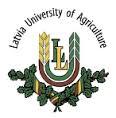Resource information
The aim of this thesis is to evaluate the influence of edge effect on vegetation succession in black alder forests. 30 permanent study plots with size of 20×50 m were established with strips at several distances from the edge towards the center of the stand. Stands in study plots fell into three categories – with adjacent clearcut to S or SW created up to 10, 20-40 or more than 41 year ago. In all study plots living trees and dead wood was measured and vegetation was described by layers and the presence of rare epiphytic lichens was recorded. Edge effects influence the vegetation for more than 40 years after the clearcut and the best indicators for this influence are vascular plants. In black alder forests of Zemgale edge influence of trees remain for up to 10 years after the disturbance – the volume of living trees, diameter of black alders, total projective coverage and number of species decreases. This indicated negative influence of abiotic factors which results in a dieback of trees. Edge effect also influences changes in moss layer: number of species, composition and projective coverage which increases even 20-40 years after the disturbance. 20-40 years after the disturbance in black alder forest positive response was found at the moss layer, explained by changes in abiotic factors: the desiccation of topsoil creates substrate availability and the increase of light conditions facilitates photosynthesis which is beneficial to moss occurrence and the increase oh moss projective cover.
Promocijas darba mērķis ir noskaidrot melnalkšņa mežu veģetācijas attīstību malas efekta ietekmē Zemgalē. Pētījumam ierīkoti 30 pastāvīgi parauglaukumi ar izmēru 20×50 m ar dažādām attāluma joslām no audzes malas uz centru. Parauglaukumu mežaudzes atbilst trīs grupām: audzes, kurām D-DR pusē atjaunošanas cirte veikta pirms 0-10 gadiem, pirms 20-40 gadiem un vairāk nekā pirms 41 gada. Visos pētījuma objektos uzmērīti augoši koki, atmirusī koksne, veikts veģetācijas sugu novērtējums pa stāviem, kā arī uzskaitītas retas epifītiskās ķērpju sugas. Malas efekta ietekme melnalkšņa mežos saglabājas arī vairāk kā 40 gadus pēc traucējuma blakus audzē, turklāt kopumā vislabāk to indicē sugas lakstaugu stāvā. Melnalkšņa mežos Zemgalē malas ietekme uz kokaudzes struktūrelementu attīstības izmaiņām saglabājas līdz 10 gadiem pēc traucējuma, kur samazinās augošu koku krāja, melnalkšņa šķērslaukums un kopējais veģetācijas sugu projektīvais segums un sugu skaits, kas liecina par negatīvu abiotisko faktoru ietekmi, kā rezultātā koki atmirst. Melnalkšņa mežos 20-40 gadus pēc traucējuma sūnu stāvā konstatēta pozitīva malas atsauces reakcija, ko izskaidro abiotisko faktoru izmaiņas: augsnes virskārtas izžūšana nodrošina substrāta pieejamību, bet gaismas daudzuma palielināšanās veicina fotosintēzi, kas labvēlīgi ietekmē sūnaugu sastopamību un to projektīvā seguma palielināšanos. Melnalkšņa mežos pie jaunām malām būtiski izmainās lakstaugu stāvs, turklāt ietekme saglabājas vairāk nekā 41 gadu pēc traucējuma blakus audzē un sniedzas 20-30 m attālumā no audzes malas. Malas ietekmē melnalkšņa mežos mainās vaskulāro sugu sastāvs lakstaugu stāvā – pieaug adventīvu un pļavas augu sugu skaits un sastopamība. Malas ietekmē melnalkšņa mežos līdz 10 gadiem pēc traucējuma blakus mežaudzē būtiski palielinās krūmu stāva sugu skaits un to projektīvais segums, turklāt saglabājas malās līdz 10 m arī vairāk nekā 41 gadu pēc traucējuma blakus audzē.



